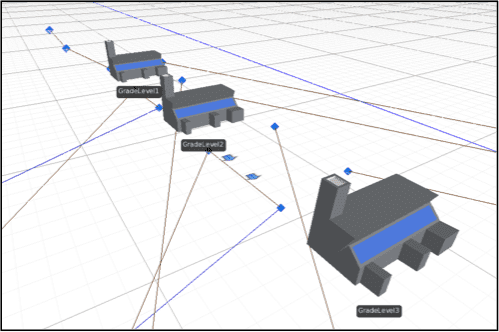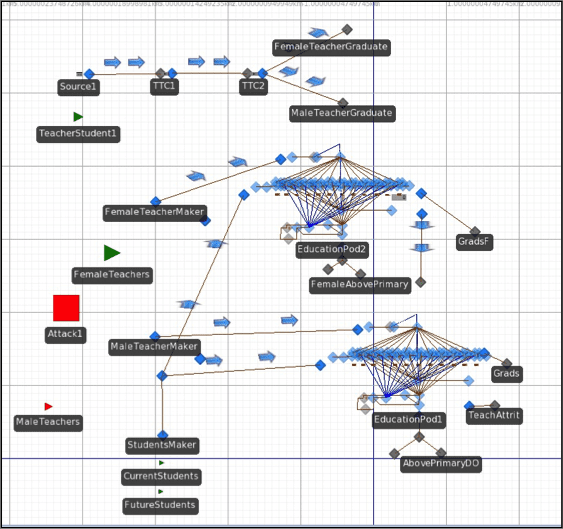
The basic grade level structure. The combiner batches students into classrooms based on either a prescribed or dynamic student teacher ratio. They are joined by a district rule. The parent entity is the teacher which is then assigned the students district. At the end of the school year, the batch is separated and students either recycle the grade level or move to another module.

The education module is the aggregation of 12 grade levels and the community education. Blue Student paths allow students to return to the respective grade level after completing community education, whereas Brown student paths connect sequential grade levels to one another and to community education. The bold, blue path brings teachers back to the teacher pool for reassignment at the end of each school year.
This work introduces a novel application of a SIMIO Discrete Event Simulation (DES) which uses entities that are analogous with primitive agents to provide key insights for the international educational planner. DES has become a common analytic tool in policy decision making and has become common ground in areas such as emergency services, healthcare management, and military procurement. However, there is an apparent gap regarding the use of such simulation analysis in education planning. Afghanistan has only a 27% literacy rate, and in much of the country security and culture prevent millions of children from attending school. Recently, the international community is dedicating substantial resources (billions in U.S. dollars and thousands of man hours) to improve Afghan education. The use of simulation to inform decisions will not only help, but should often be compulsory before the dedication of limited resources on such a complex and confounded system. Here we introduce a relevant proof of a principal simulation model in which individual students and teachers interact within the Afghanistan Education System across a variable time horizon. This will allow the education planner or policy maker to glean insight into the implications of security, policy, and infrastructure in this complex and capricious environment.

